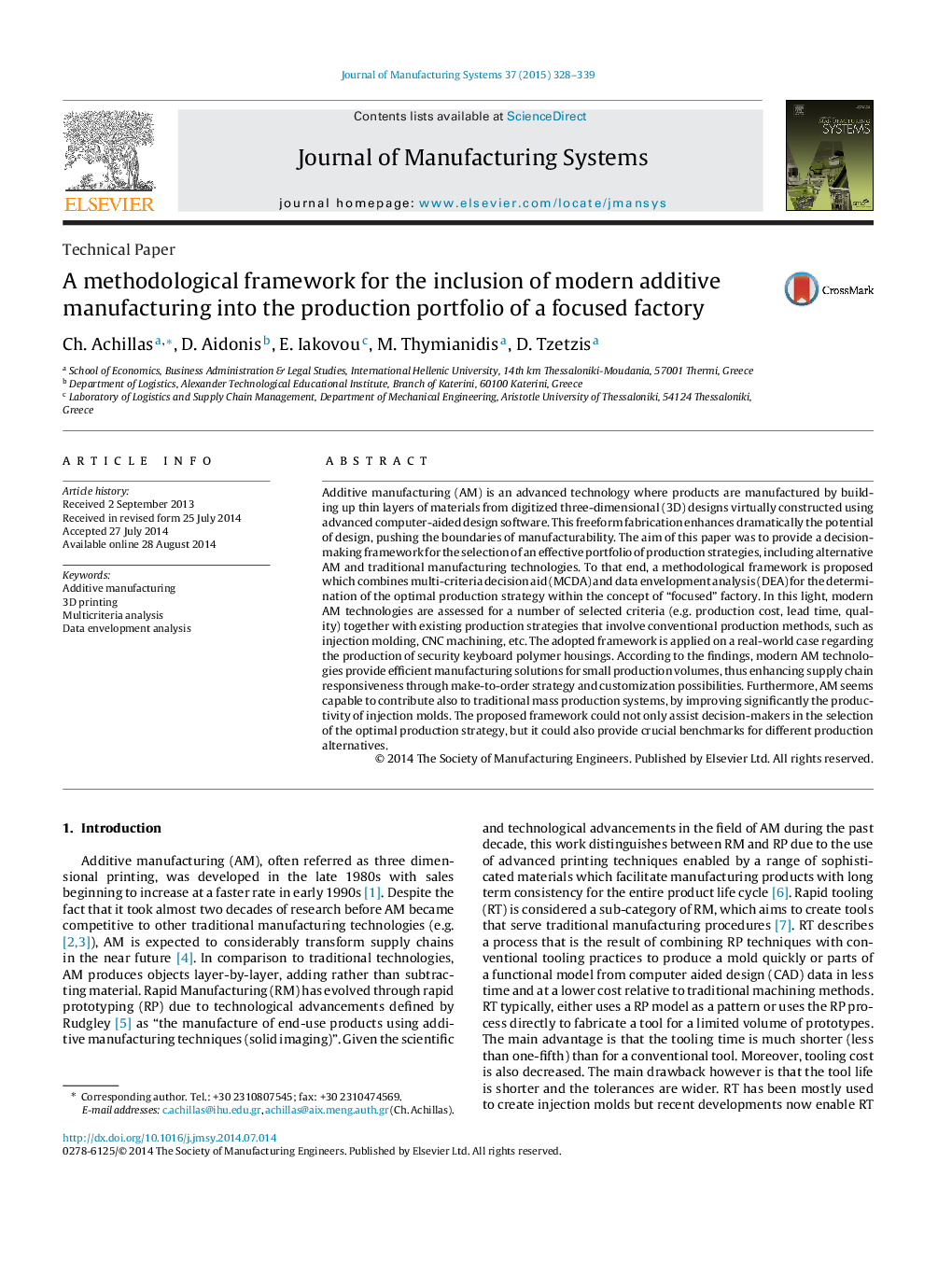| Article ID | Journal | Published Year | Pages | File Type |
|---|---|---|---|---|
| 1697548 | Journal of Manufacturing Systems | 2015 | 12 Pages |
•A methodological framework that combines multi-criteria decision aid (MCDA) and data envelopment analysis (DEA).•The framework aims toward the identification of optimal production strategy.•Additive manufacturing technologies offer efficient production alternatives, especially for small production volumes.•Additive manufacturing enhances supply chain responsiveness through make-to-order strategy and customization possibilities.
Additive manufacturing (AM) is an advanced technology where products are manufactured by building up thin layers of materials from digitized three-dimensional (3D) designs virtually constructed using advanced computer-aided design software. This freeform fabrication enhances dramatically the potential of design, pushing the boundaries of manufacturability. The aim of this paper was to provide a decision-making framework for the selection of an effective portfolio of production strategies, including alternative AM and traditional manufacturing technologies. To that end, a methodological framework is proposed which combines multi-criteria decision aid (MCDA) and data envelopment analysis (DEA) for the determination of the optimal production strategy within the concept of “focused” factory. In this light, modern AM technologies are assessed for a number of selected criteria (e.g. production cost, lead time, quality) together with existing production strategies that involve conventional production methods, such as injection molding, CNC machining, etc. The adopted framework is applied on a real-world case regarding the production of security keyboard polymer housings. According to the findings, modern AM technologies provide efficient manufacturing solutions for small production volumes, thus enhancing supply chain responsiveness through make-to-order strategy and customization possibilities. Furthermore, AM seems capable to contribute also to traditional mass production systems, by improving significantly the productivity of injection molds. The proposed framework could not only assist decision-makers in the selection of the optimal production strategy, but it could also provide crucial benchmarks for different production alternatives.
